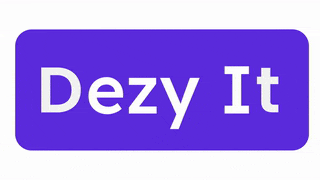The Importance of Patient Triage in Healthcare: Enhancing Efficiency and Patient Care
- Hrshikesh Vellayath
- Nov 14, 2024
- 3 min read
Patient triage is an essential process in healthcare, especially in high-pressure environments like emergency rooms and urgent care clinics, where it’s vital to quickly assess and prioritize care based on each patient’s condition. Effective triage improves patient outcomes, minimizes wait times, and enhances overall healthcare efficiency. In this blog, we’ll dive into what patient triage is, why it’s crucial, and how it contributes to better patient care and safety.

What is Patient Triage?
Patient triage is the process of evaluating and categorizing patients based on the urgency of their medical needs. It allows healthcare providers to prioritize critical cases and allocate resources efficiently, particularly in settings where demand for immediate care is high. Triage is most commonly associated with emergency rooms (ERs) but is increasingly important in primary care, telehealth, and community health.
Types of Patient Triage in Healthcare
Emergency Room Triage
Used to assess patients based on severity using tools like the Emergency Severity Index (ESI), ensuring that life-threatening cases receive immediate attention.
Primary Care Triage
Helps prioritize patients for same-day visits, especially those with acute symptoms or urgent needs.
Telehealth Triage
Conducted remotely, telehealth triage enables clinicians to assess patient symptoms and recommend the appropriate level of care.
Community Health Triage
Employed during large public events or natural disasters, community triage helps allocate medical resources effectively for immediate needs.
Each type of triage aims to improve patient flow and ensure timely, efficient care.
Why Patient Triage is Essential in Healthcare
Triage is a cornerstone of effective healthcare management. Here’s why patient triage is indispensable in delivering efficient, high-quality care:
1. Ensures Immediate Care for Critical Patients
Triage allows healthcare teams to swiftly identify and prioritize patients with life-threatening conditions, such as heart attacks, severe trauma, or strokes. Immediate attention for critical cases can significantly reduce mortality and improve outcomes.
Example: A patient with chest pain is triaged as a high priority to rule out life-threatening issues, while minor injuries are addressed as resources allow.
2. Reduces Wait Times and Enhances Efficiency
By categorizing patients by urgency, triage reduces wait times for those with serious conditions, allowing healthcare providers to manage patient flow better and avoid overcrowding.
Example: Triage in an emergency room streamlines care, helping staff attend to critical cases quickly and minimizing overall wait times for all patients.
3. Minimizes Overuse of Emergency Services
Triage helps redirect non-urgent cases to appropriate healthcare settings, such as urgent care or primary care clinics, thereby reducing the strain on emergency resources.
Example: A patient with mild symptoms can be referred to a primary care clinic, conserving ER resources for life-threatening cases.
4. Improves Patient Satisfaction and Experience
Patients feel reassured when critical cases are prioritized, and less urgent cases are managed effectively, enhancing patient satisfaction and trust in healthcare services.
Example: Efficient triage in a clinic can help patients feel valued and well-cared for, building trust and ensuring a positive experience.
5. Enhances Safety by Identifying High-Risk Patients Early
Effective triage identifies high-risk cases at the outset, allowing for immediate intervention and minimizing the risk of complications, even in telehealth settings.
Example: A telehealth triage nurse may recognize signs of a severe condition, like appendicitis, prompting the patient to seek in-person care quickly.
How Technology is Revolutionizing Patient Triage
AI-powered triage and digital tools are transforming traditional triage, making it faster and more accurate. These technologies aid in risk assessment, symptom tracking, and patient prioritization, enhancing triage efficiency in both emergency and telehealth settings.
AI-Powered Triage Tools
AI in healthcare allows for predictive analysis, identifying symptoms and red flags quickly. For example, AI-driven triage chatbots guide patients through symptom-checking questions, enhancing triage accuracy.
Electronic Triage and Patient Tracking
With electronic triage integrated into Electronic Health Records (EHRs), healthcare staff can track patient conditions in real-time, reducing human error and streamlining care.
Best Practices for Effective Patient Triage
To maximize the benefits of triage, healthcare providers should implement these best practices:
Standardized Triage Protocols
Consistent protocols, like the Emergency Severity Index (ESI), ensure reliability across different settings.
Continuous Training for Triage Staff
Ongoing training in symptom recognition and triage protocols enables accurate and effective triaging.
Regular System Evaluations
Regular assessments of triage systems can help identify and address inefficiencies.
Leveraging Technology
Utilizing AI-driven triage and digital tools can enhance the speed and accuracy of patient prioritization.
Conclusion: Patient Triage as the Foundation of Quality Care
Patient triaging is essential for delivering efficient, quality care across healthcare settings. It ensures that those with critical conditions receive immediate attention while also reducing wait times, preventing ER overcrowding, and improving patient satisfaction. As technology advances, AI-driven triage and electronic patient tracking will continue to support healthcare providers in making fast, data-informed decisions. Effective triage is foundational to creating a responsive, patient-centered healthcare environment.

